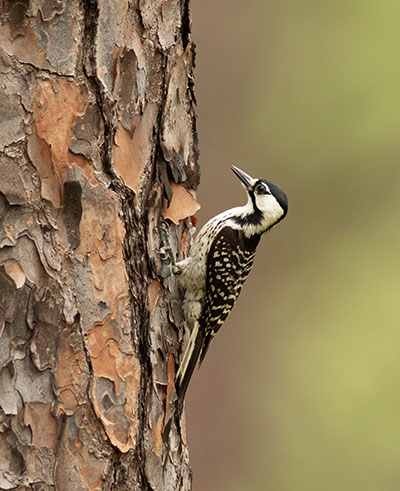Why Are Longleaf Forests and Woodlands Important for Birds?
A diverse group of birds uses forest habitat for food, shelter, nesting and breeding. Insects associated with the grasses, forbs, and wildflowers of the forest floor are critical for sustaining healthy bird populations. An estimated 36 percent of the bird species of the longleaf forest forage near or on the ground.
The forest is a dynamic system for bird life. The species composition, age, structure and health of a forest stand determines which bird species are present. As the forest matures, the species and density of birds change. In a forest’s early successional stage, bird species such as Eastern Meadowlark, Eastern Bluebird, and Mourning Dove may be most abundant in a forest stand, declining then increasing again as the mid-story becomes more open. Populations of birds such as Indigo Bunting, Yellow-breasted Chat, Common Yellowthroat, and Prairie Warbler, which prefer habitat with dense shrub cover, may peak 3-10 years after establishment of a stand.
 Prairie WarblerMatt Buckingham – A Naturalist’s Journey, Flickr, and Instagram
Prairie WarblerMatt Buckingham – A Naturalist’s Journey, Flickr, and InstagramBird species diversity and abundance in mature pine stands can vary significantly depending on the density of the canopy and development of the understory (ground vegetation). Dense pine stands offer very little bird habitat in the mid- and understory layers as a result of extreme shading. Birds found in these stands are usually present at lower densities and tend to be more adapted to life in the canopy rather than the understory. Examples include Red-eyed Vireo, Pine Warbler, Summer Tanager, and Yellow-billed Cuckoo. Others common in these stands include common forest generalists like the Northern Cardinal, Tufted Titmouse, Carolina Chickadee, Carolina Wren, American Crow, and Blue Jay.
Pine stands maintained in more open condition (25-60% canopy cover) and benefiting from frequent prescribed fire (1-4 years) tend to host an abundance of the species noted above, as well as imperiled species such as Brown-headed Nuthatch, Bachman’s Sparrow, Northern Bobwhite, Red-cockaded and Red-headed Woodpeckers, American Kestrel, Eastern Wild Turkey, LeConte’s Sparrow, and Prairie Warbler. Open pine habitats composed of older trees maintained at relatively low canopy cover and basal area with sparse shrubby and abundant grassy understory provide the greatest benefit to priority bird species.

